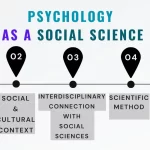What is social security? It is a public system aiming to ensure the citizens a series of protective benefits for illness, unemployment, or retirement.
The Article Shows:
What is Social Security?
Social security is the harmonious set of public and private entities, norms, and procedures and is made up of the general regimes established for pensions, health, occupational risks, family allowances, and complementary society-related services that are defined in the law. This system covers eventualities such as alterations to health, incapacity for work, unemployment, old age, and death, for whose protection the Health, Pensions, Occupational Risks, and Family Allowance systems were established.
Although we have already talked about what Social Security is from a practical point of view, in reality, this service is a public insurer. That is, it covers risks and citizens pay an insurance premium for it.

History of Social Security
Although each country adopted Social Security on a specific date, in general terms the creation of Social Security corresponds to Otto von Bismarck. Otto von Bismarck was the chancellor who put the Security system into operation at the end of the 19th century, specifically in 1889. Despite the above, and in honor of the truth, it is fair and necessary to mention the role played by William I of Germany. After the First World War, the development of this type of social coverage system grew and it was many countries that gradually developed and created it. And, if in 1900 only 17 countries had Security of society, in 1946 there were already 104.
According to the ILO, in 2015 there were already almost 200 countries that had their Security system in operation.
How does the Social Security System run?
The Social Security system is public since it is provided by the State itself.
Its existence is based on the contributions that taxpayers make, on a mandatory basis, through their payrolls, or through the legally required fees for carrying out an activity. The state assigned a social security number or card to monitor the system.
For example, Germany gives its citizens a social insurance number to run the system.
The funds are necessary to finance these benefits. It has been obtained from social contributions, which are contributions made by both workers and companies.
For example, just as we pay for home insurance, to try to compensate for the risk of certain situations occurring, in the case of Security it is the same.
For example, This service, as a general rule, covers contingencies such as the following:
- Maternity leave.
- Leave due to a work accident.
- Unemployment situation (The Supplemental Security Income – SSI).
- Retirement.
Different Types of Benefits in Social Security
The protective action of Social Security is enormous. In our environment, we see many people who benefit from it. For example, grandparents collect a retirement pension every month. Or a friend who lost his job and is collecting unemployment benefits.
Social welfare generated by this Security service is very important in these times. Its benefits can materialize in various ways. Let’s see the main ones:
Direct benefits:
They are those through which people receive health care services, pharmaceutical benefits, or social services.
Economic benefits:
Here we find the subsidies (temporary disability, risk during pregnancy or breastfeeding, care for minors affected by serious illnesses ), pensions (for retirement, for permanent disability, for death and survival or extraordinary), compensation (for permanent injuries, permanent partial disability or death) and others such as family protection benefits, unemployment, death or widowhood assistance.
There are special benefits for workers. Such as:
- Guarantee of protection of fundamental rights.
- Create and maintain a safe work environment for workers and contractors.
- Welfare and economic benefits for the worker and his family.
- Generation of income that improves the domestic economy.
- Recreation and culture for the worker and the family.
- Health security and risk coverage by the system
- Compliance with standards.
The protective action of Social Security is an example of an element of the Welfare State characteristic of societies. It guarantees a minimum standard of living for their population.
Types of Security Regimes
People who contribute to Social Security have integrated into different regimes depending on the nature of their work or economic activity. On the one hand, we find the General Scheme, which is made of employed workers, that is, those who work for a company that does not belong to them. In this part, you will know more about what is social security.
What is the contribution base?
There are special regimes and systems made of people. They carry out economic activity with special and differentiating characteristics. There are several modalities, among them:
Special Regime for Self-Employed Workers (RETA): This is formed by those who work on their account or in their own business.
Special System for Household Employees: It includes people who perform paid services, such as housework or caring for people in the family home.
School insurance: It welcomes those under 28 years of age enrolled in the 3rd and 4th year of ESO, Baccalaureate, training cycles, and university studies.
Maybe you are interested in reading. What is a pension plan?
Contributory and non-contributory modalities
These contributions made by companies and workers make it possible to define the two modes of action of Social Security: the contributory and the non-contributory mode, The former requires contributing to Social Security for a specified number of years to receive the benefit (15 years in the case of pensions); Non-contributory benefits are more of a welfare type and aims at all types of people, whether they have contributed or not.
Objectives of Society and Security
The main objective of this system is to give protection to citizens. To do this, it carries out activities financed by state budgets. And which has social and redistributive objectives, protecting people so that social imbalances do not occur. These social activities developed in four areas:
- Money transfers, such as unemployment benefits, retirement, or disability pensions.
- Health insurance must be universal and free.
- Free and universal education services.
- Supervision of housing, food, and other basic needs.
Funding for the Security of society comes mainly from the contribution of the country’s workers. It is organized by the Contribution Account Code. This is an eleven-digit number that is assigned to people at the beginning of their working life. You will identify with it.
In addition, it should clarify that medical assistance does not cover Social Security accounts.
Seen from another point of view, what is Social Security? It’s the largest and most important welfare platform. And it is offered by the State to its citizens.
To know more visit Social Security Club and SSA: The United States Social Security Administration.
FAQs
What is the 5-Year Rule of Social Security?
When analyzing your Social Security retirement benefits, the Five-Year Rule is crucial. To be completely eligible for retirement benefits under this regulation, you must have at least five years of covered earnings.
What is Social Security Service?
It is a public system aiming to ensure the citizens a series of protective benefits for illness, unemployment, or retirement.
When Social Security System First Started?
Otto von Bismarck was the chancellor who put the Security system into operation at the end of the 19th century, specifically in 1889. Despite the above, and in honor of the truth, it is fair and necessary to mention the role played by William I of Germany.
What are the Conditions of Social Security?
Disability
Maternity
SSI
Retirement










One thought on “What is Social Security? 5 Benefits of Social Security”